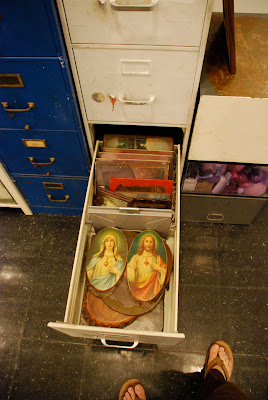CHAPTER 6
I Have a Dream
I once met an artist through an altercation. It was at Claremont Graduate University during a VCU group show - an exchange we did in February of 2006. I had taken a photograph of a gallery interior of the show in which she and her peers were conversing in the background. Her friend anxiously pointed out the transgression and she angrily approached me yelling, “Did you take a photo of me? You have to delete that right now!” As I obediently did so the middle-aged conceptual artist explained her lifelong project of prohibiting records of her image and her voice past those that existed from her youth. I suppose it had something to do with mediated memory, mediated identity, and the Fountain of Youth. My project would be the opposite but just as egotistical.
My dream art shows are ones that are impossible to actualize. A favourite is The Incidental Portrait. These are portraits that ‘happen’ when one is accidentally caught, for example, in the background of a tourist’s photograph or filmed on a security camera. If it were possible to obtain every photograph and video clip I would fill a museum with these results of public overlap and surveillance as a massive “incidental portrait”.
Another impossible dream show is The Life Story of Every Thrift Store Object I Have Ever Bought. As an avid thrifter this show would also be huge, for it would showcase each object along with photographs and other documentation of the previous owner’s(‘) use(s) of the object along with documentation of my own use(s) of the same object.
I mention this latter dream to illustrate one of the strategies of infusing content into formalist work. Although the work is abstract, every object used fills the supposedly empty formal void with content. Each found object not only carries a message in its medium and a meaning implied in its function, but also a narrative read from its use. Sometimes we are privy to details of the narrative through clues left by the previous owner. This is particularly true of the kitchen cutting boards I collect whose stains and knife marks reference the owner’s hand and activity. I value these same storytelling marks for their instant transformation into found drawings and paintings when hung on a wall. Furthermore, these narratives become palimpsests as the text of interventions doubles the text of its previous function(s).
I sort of approach a dream artshow here in my thesis show by filling the flat files and filing cabinets with many of the small works and collections. Its organizes the studio and the two years in slices - like a sedimentation of my studio practice that you can pull out in layers from the main rock formed out of the studio. Part of my realization of this metaphor was suggested by Taylor's mountain next to it - and it was reinforced when i recently read Robert Smithson's "Sedimentation of the Mind"
These are actually the framed drawings of me done by my students in Utah



Teddy Bear Limbs



"The Roundies" (the paintings i started in Provo and first worked on in Richmond)


















